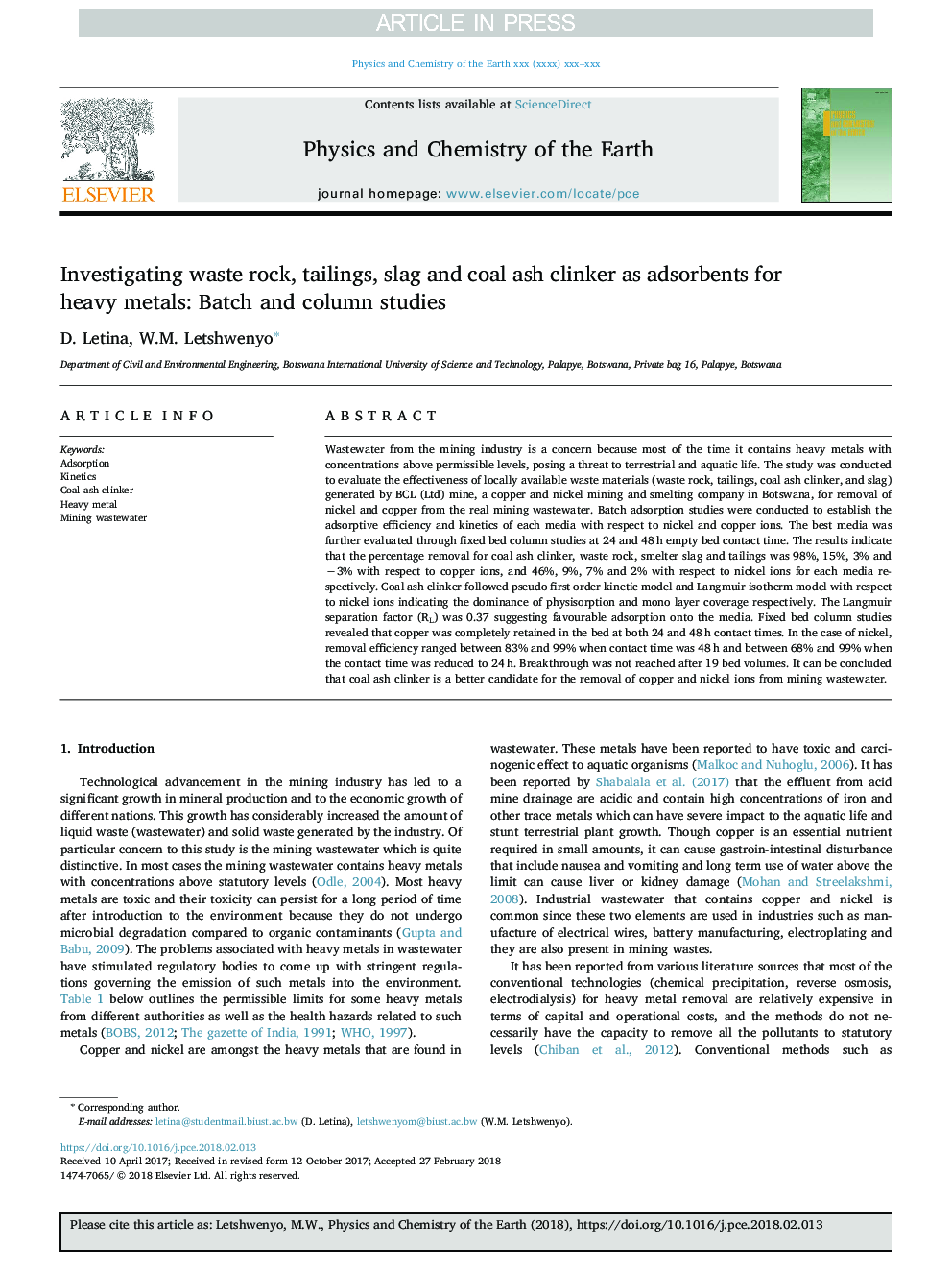| Article ID | Journal | Published Year | Pages | File Type |
|---|---|---|---|---|
| 8912355 | Physics and Chemistry of the Earth, Parts A/B/C | 2018 | 7 Pages |
Abstract
Wastewater from the mining industry is a concern because most of the time it contains heavy metals with concentrations above permissible levels, posing a threat to terrestrial and aquatic life. The study was conducted to evaluate the effectiveness of locally available waste materials (waste rock, tailings, coal ash clinker, and slag) generated by BCL (Ltd) mine, a copper and nickel mining and smelting company in Botswana, for removal of nickel and copper from the real mining wastewater. Batch adsorption studies were conducted to establish the adsorptive efficiency and kinetics of each media with respect to nickel and copper ions. The best media was further evaluated through fixed bed column studies at 24 and 48â¯h empty bed contact time. The results indicate that the percentage removal for coal ash clinker, waste rock, smelter slag and tailings was 98%, 15%, 3% and â3% with respect to copper ions, and 46%, 9%, 7% and 2% with respect to nickel ions for each media respectively. Coal ash clinker followed pseudo first order kinetic model and Langmuir isotherm model with respect to nickel ions indicating the dominance of physisorption and mono layer coverage respectively. The Langmuir separation factor (RL) was 0.37 suggesting favourable adsorption onto the media. Fixed bed column studies revealed that copper was completely retained in the bed at both 24 and 48â¯h contact times. In the case of nickel, removal efficiency ranged between 83% and 99% when contact time was 48â¯h and between 68% and 99% when the contact time was reduced to 24â¯h. Breakthrough was not reached after 19 bed volumes. It can be concluded that coal ash clinker is a better candidate for the removal of copper and nickel ions from mining wastewater.
Keywords
Related Topics
Physical Sciences and Engineering
Earth and Planetary Sciences
Geochemistry and Petrology
Authors
D. Letina, W.M. Letshwenyo,
